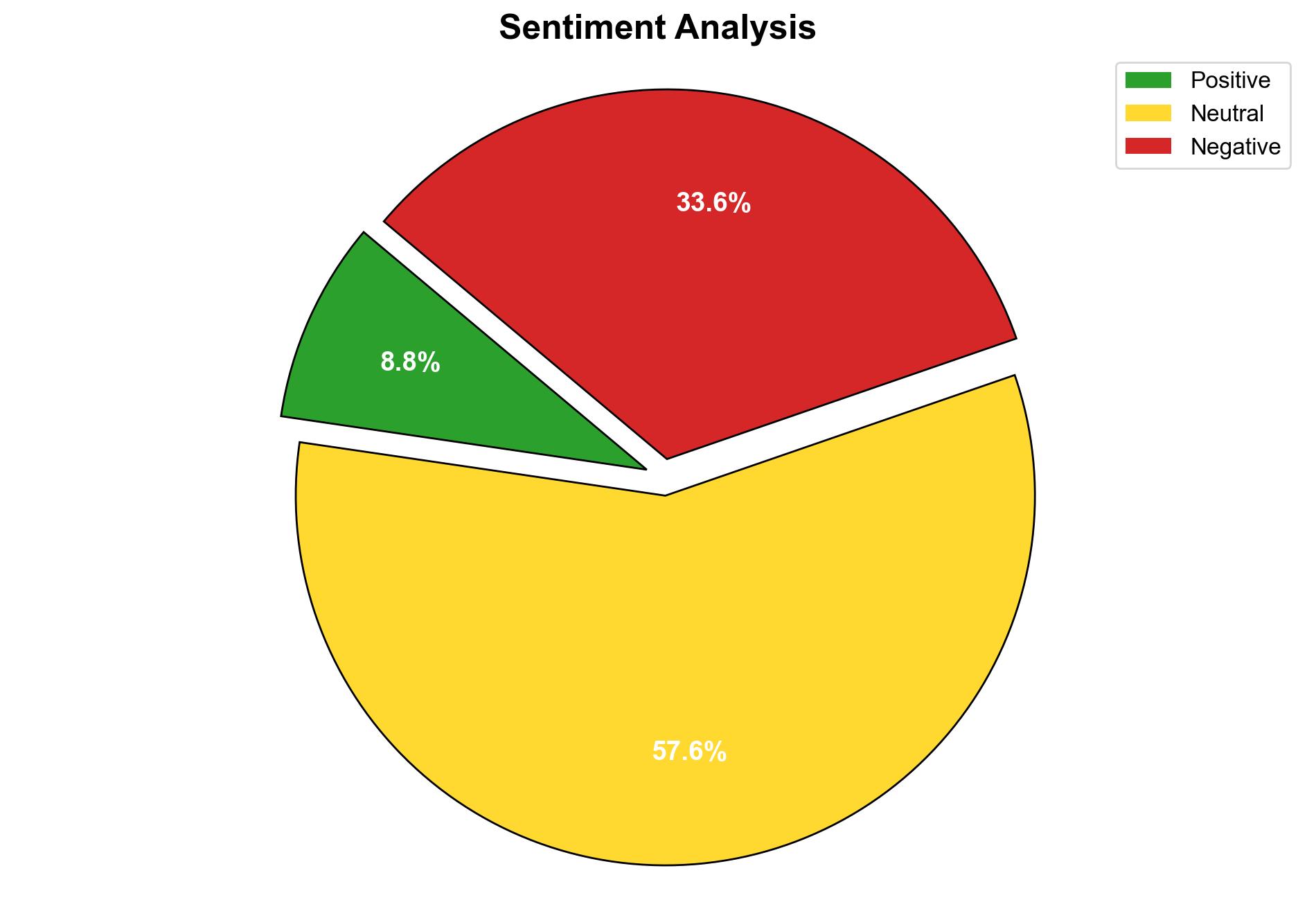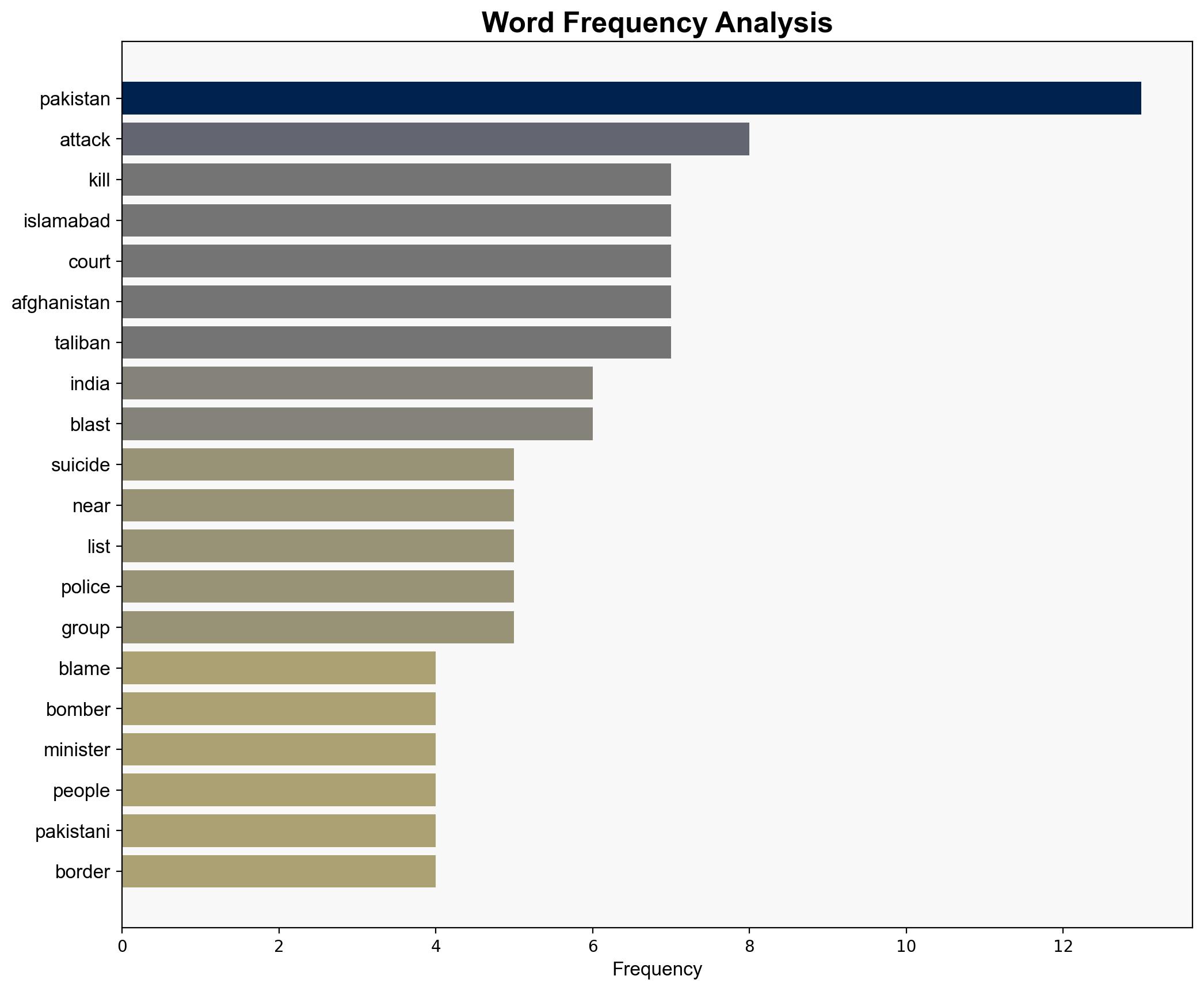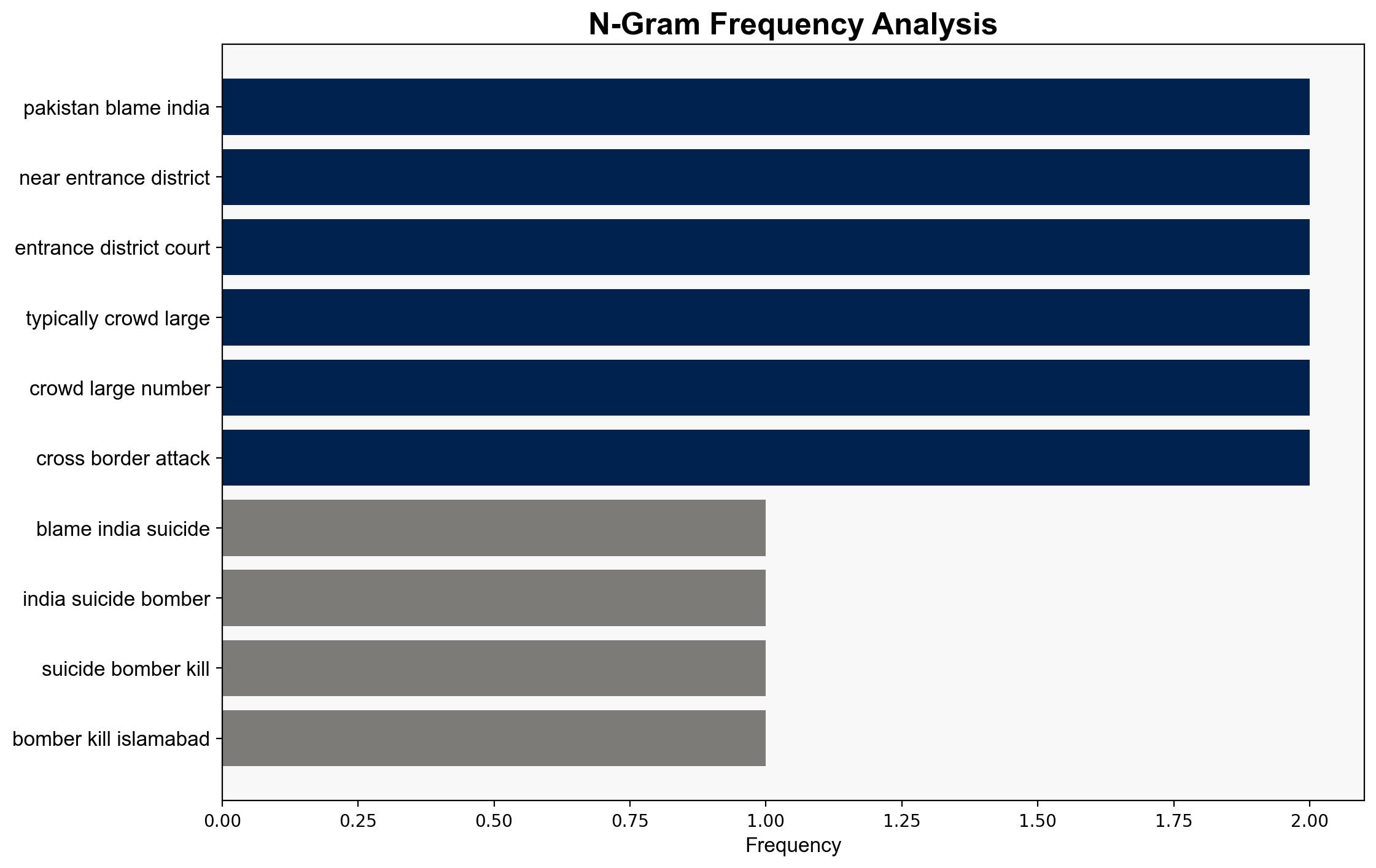Six killed in blast outside Islamabad court in Pakistan – Al Jazeera English
Published on: 2025-11-11
AI-powered OSINT brief from verified open sources. Automated NLP signal extraction with human verification. See our Methodology and Why WorldWideWatchers.
Intelligence Report: Six killed in blast outside Islamabad court in Pakistan – Al Jazeera English
1. BLUF (Bottom Line Up Front)
The most supported hypothesis is that the blast outside the Islamabad court was orchestrated by a militant group, potentially with links to the Pakistan Taliban, to destabilize the region and strain Pakistan’s relations with neighboring countries, particularly India and Afghanistan. Confidence Level: Moderate. Recommended action includes enhancing regional intelligence cooperation and fortifying security measures at potential target sites.
2. Competing Hypotheses
Hypothesis 1: The attack was carried out by a militant group, such as the Pakistan Taliban, aiming to destabilize Pakistan and undermine its security apparatus. This is supported by the modus operandi and the location targeting law enforcement.
Hypothesis 2: The attack was a false flag operation by domestic or foreign actors to exacerbate tensions between Pakistan and India, or to influence Pakistan’s internal politics. This hypothesis is less supported due to lack of direct evidence and the complexity of executing such operations without detection.
3. Key Assumptions and Red Flags
Assumptions include the belief that militant groups have the capability and intent to conduct such attacks. A red flag is the immediate attribution of blame to India without conclusive evidence, which could indicate a bias or an attempt to deflect from internal security failures. Deception indicators include the lack of a credible claim of responsibility from known groups.
4. Implications and Strategic Risks
The attack could lead to increased cross-border tensions, particularly with India and Afghanistan, potentially escalating into military skirmishes. Domestically, it could undermine public confidence in the government’s ability to maintain security, leading to political instability. There is also a risk of retaliatory attacks, further destabilizing the region.
5. Recommendations and Outlook
- Enhance intelligence-sharing mechanisms with regional partners to preemptively identify and neutralize threats.
- Strengthen security protocols at high-risk locations, including courts and government buildings.
- Engage in diplomatic dialogues to de-escalate tensions with India and Afghanistan.
- Best case scenario: Improved regional cooperation leads to a reduction in cross-border attacks.
- Worst case scenario: Escalation of hostilities results in military conflict.
- Most-likely scenario: Continued sporadic attacks with ongoing diplomatic tensions.
6. Key Individuals and Entities
Mohsin Naqvi (Pakistan’s Interior Minister), Shehbaz Sharif (Prime Minister of Pakistan), Asif Ali Zardari (President of Pakistan), Khawaja Asif (Pakistani Defence Minister).
7. Thematic Tags
Regional Focus: South Asia, Counterterrorism, Pakistan-India Relations, Pakistan-Afghanistan Relations
Structured Analytic Techniques Applied
- Causal Layered Analysis (CLA): Analyze events across surface happenings, systems, worldviews, and myths.
- Cross-Impact Simulation: Model ripple effects across neighboring states, conflicts, or economic dependencies.
- Scenario Generation: Explore divergent futures under varying assumptions to identify plausible paths.
Explore more:
Regional Focus Briefs ·
Daily Summary ·
Methodology





